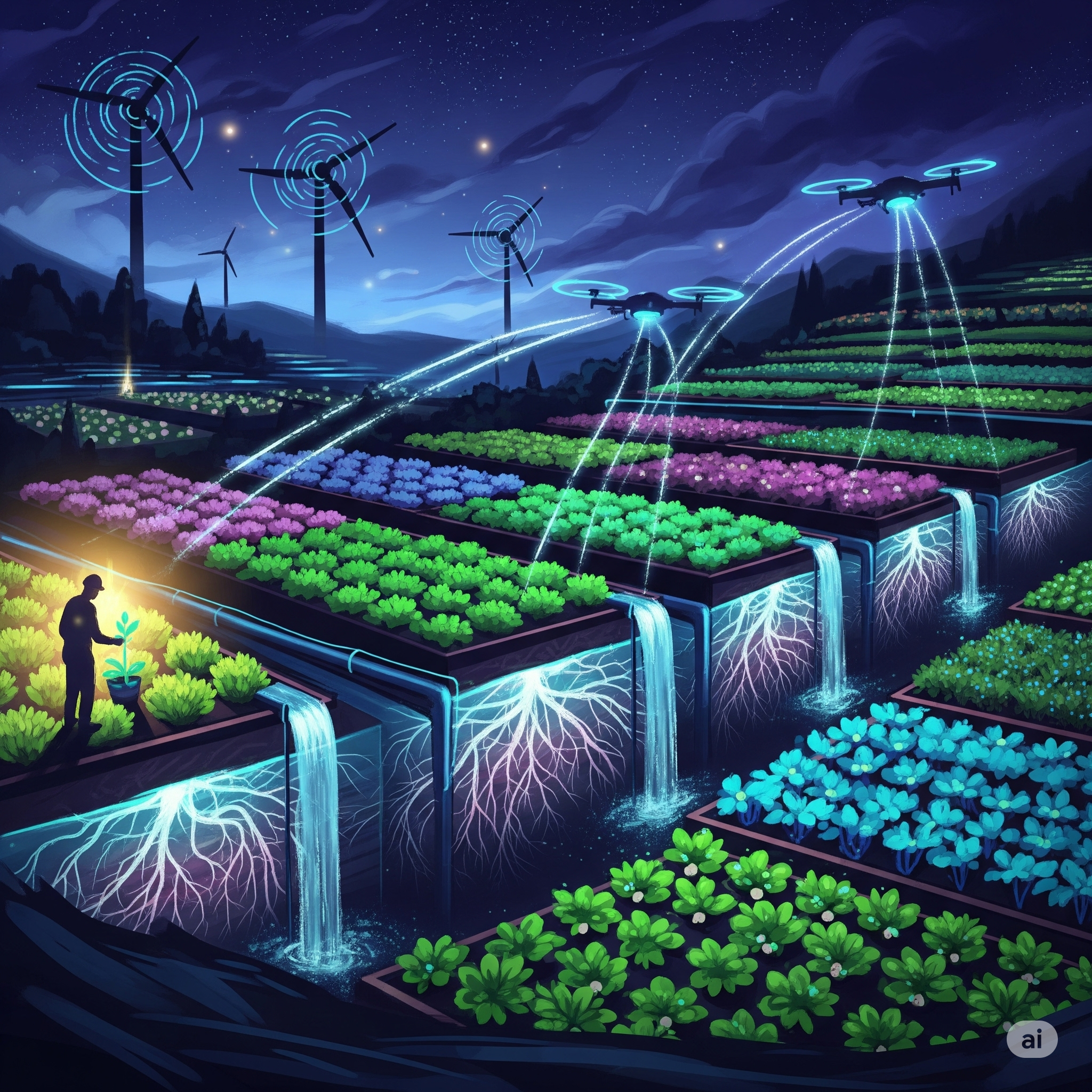Introduction
Earth’s surface is adorned with a variety of landforms, each with its unique features and roles in shaping human activity. Among these, plateaus hold a distinct place due to their geological significance, topographic diversity, and socio-economic importance. A plateau is essentially an elevated flatland that has been uplifted by endogenic forces. These landforms exist in various sizes and are found across all continents. In India, the Bundelkhand Plateau stands as a notable example, not only for its geological structure but also for its role in regional agriculture.
This article explores the definition and characteristics of plateaus and provides an in-depth analysis of the Bundelkhand Plateau’s significance in agriculture. This content is curated to be completely unique, educational, and informative for students, researchers, and general readers.
What is a Plateau?
Definition and Formation
A plateau is a landform that is significantly elevated above the surrounding terrain and has a relatively flat or gently undulating surface. Unlike mountains, which are characterized by steep slopes and jagged peaks, plateaus are more level and often expansive. The height of plateaus can vary widely—from a few hundred meters to several thousand meters above sea level.
Formation of plateaus occurs due to various geological processes, including:
- Tectonic uplift: Movements of Earth’s crust can uplift large horizontal blocks, forming tectonic plateaus.
- Volcanic activity: Repeated lava flows can accumulate to form lava plateaus.
- Erosional processes: Long-term erosion of surrounding land can leave behind a raised flat region.
Types of Plateaus
- Tectonic Plateaus – Formed by crustal uplift (e.g., Tibetan Plateau).
- Volcanic Plateaus – Created by successive lava flows (e.g., Deccan Plateau).
- Intermontane Plateaus – Found between mountain ranges (e.g., Colorado Plateau).
- Piedmont Plateaus – Located at the base of mountains, formed by deposition or erosion.
Geographical and Geological Overview of the Bundelkhand Plateau
Location and Extent
The Bundelkhand Plateau lies in the central part of India, spanning across southern Uttar Pradesh and northern Madhya Pradesh. Geographically, it is bounded by the Yamuna River in the north and the Vindhyan ranges in the south. Major districts covered by the plateau include Jhansi, Banda, Chitrakoot, Lalitpur, and parts of Hamirpur and Mahoba in Uttar Pradesh, along with portions of Tikamgarh and Sagar in Madhya Pradesh.
Geological Features
- Age and Composition: The Bundelkhand Plateau is one of the oldest landmasses in India, primarily composed of Archaean granite and gneissic rocks, dating back billions of years.
- Topography: The landscape is rugged and undulating, with scattered hillocks, ridges, and occasional flat-topped areas.
- Drainage: Rivers like Betwa, Dhasan, and Ken traverse the plateau, often forming deep gorges and valleys.
This unique topographical and geological framework has profound implications for both human settlement and agricultural activities.
Climatic Conditions of Bundelkhand
The Bundelkhand region experiences a semi-arid to sub-humid climate, characterized by:
- Hot summers (April to June) with temperatures soaring above 45°C.
- Monsoon season (July to September), receiving 700–900 mm rainfall annually.
- Cool winters (November to February) with temperatures dropping to 5–7°C.
Rainfall is seasonal and erratic, leading to a high dependence on monsoon rains for agriculture. The region often faces drought-like conditions due to uneven rainfall distribution.
Soil Characteristics in Bundelkhand
The soil profile of the Bundelkhand Plateau varies but is predominantly made up of:
- Red and Yellow Soils: Derived from crystalline rocks; poor in nitrogen and phosphorous.
- Black Cotton Soils (Regur): Found in parts of southern Bundelkhand, rich in clay and moisture-retaining capacity.
- Alluvial Soils: Found in the northern fringes; more fertile due to riverine deposits.
- Laterite Soils: Occasional patches, especially in hilly terrain.
Soil fertility in Bundelkhand is generally moderate to poor, requiring scientific intervention for sustainable agriculture.
Agricultural Significance of the Bundelkhand Plateau
1. Traditional Agricultural Practices
Agriculture in Bundelkhand has historically been rain-fed and based on subsistence farming. The primary crops include:
- Cereals: Wheat, barley, and sorghum (jowar).
- Pulses: Arhar (tur), urad, moong.
- Oilseeds: Mustard and groundnut.
- Vegetables: Onion, potato, tomato in irrigated patches.
Farmers in this region have traditionally relied on bullocks and manual tools, with low input and output ratios. However, this traditional resilience has shaped a unique agricultural culture that persists despite environmental adversities.
2. Water Resources and Irrigation Challenges
One of the greatest challenges in Bundelkhand agriculture is water scarcity. The region lacks adequate irrigation infrastructure, and groundwater levels are often deep and saline in nature.
- Rivers like Ken and Betwa are underutilized due to lack of canals and proper watershed planning.
- Water harvesting structures such as ponds, stepwells (baolis), and check dams have historical significance but are in disrepair.
There have been recent efforts to rejuvenate traditional water systems and introduce drip and sprinkler irrigation, especially in areas with low water availability.
3. Impact of Drought and Climate Variability
The Bundelkhand Plateau frequently experiences cyclic droughts, adversely affecting agricultural productivity. Droughts lead to:
- Crop failure.
- Livestock distress.
- Migration of rural labor to urban areas.
- Increased debt and socio-economic vulnerability of farmers.
To combat this, there is a growing focus on climate-resilient agriculture, including:
- Drought-tolerant crop varieties.
- Mixed cropping and agroforestry.
- Use of organic and bio-fertilizers.
4. Potential for Horticulture and Allied Activities
Despite its challenges, Bundelkhand has a latent potential for agricultural diversification:
- Horticulture: Mango, guava, ber, and citrus fruits can thrive in rocky terrain with less water.
- Floriculture: Marigold and rose cultivation is emerging near urban pockets.
- Animal Husbandry: Goats, poultry, and dairy farming are viable supplementary sources of income.
- Medicinal Plants: The rocky terrain supports herbs like ashwagandha, safed musli, and aloe vera.
These sectors, if integrated properly, can supplement income and reduce dependence on cereal crops.
5. Government Initiatives and Development Schemes
Recognizing the agricultural potential and distress of Bundelkhand, both central and state governments have launched several schemes:
- Bundelkhand Package (2010–2015): Aimed at improving water conservation, irrigation, and sustainable livelihood.
- Pradhan Mantri Krishi Sinchayee Yojana (PMKSY): Focuses on “Har Khet Ko Pani” (water for every field).
- National Mission on Sustainable Agriculture (NMSA): Encourages climate-smart farming.
- Watershed Development Projects: Help in improving soil moisture and preventing erosion.
However, implementation bottlenecks, corruption, and poor awareness at the grassroots level have limited their full impact.
Challenges in Bundelkhand’s Agricultural Landscape
Despite its potential, the Bundelkhand Plateau faces several persistent issues:
- Land Degradation: Soil erosion, deforestation, and mining activities have deteriorated land quality.
- Small and Fragmented Holdings: Most farmers have less than 2 hectares of land.
- Lack of Market Access: Farmers often sell produce at low prices due to absence of storage and processing facilities.
- Inadequate Extension Services: Farmers lack technical knowledge and support for modern farming methods.
- Migration and Labor Shortages: Seasonal migration to cities affects agricultural labor availability.
Future Prospects and Sustainable Solutions
For agriculture in Bundelkhand to become sustainable and profitable, a multi-pronged strategy is essential:
1. Integrated Watershed Management
Efficient use of rainfall and groundwater can be achieved through:
- Construction of contour bunds and check dams.
- Revival of traditional water harvesting systems.
- Rooftop rainwater harvesting in rural homes.
2. Promotion of Agroforestry
Combining tree plantations with crops can enhance soil fertility, control erosion, and provide alternate income through timber and fruits.
3. Agricultural Research and Extension
Local agricultural universities and Krishi Vigyan Kendras (KVKs) must:
- Develop location-specific technologies.
- Train farmers in organic farming, pest management, and soil health.
- Distribute improved seeds and provide timely advisories.
4. Cooperative Farming and FPOs
Farmer Producer Organizations (FPOs) can:
- Provide better bargaining power.
- Facilitate input supply and marketing.
- Encourage processing and value addition at the village level.
5. Digital Agriculture and Innovation
Use of mobile apps, satellite weather forecasts, and precision farming tools can revolutionize farming even in backward regions like Bundelkhand.
Conclusion
The Bundelkhand Plateau, despite its tough terrain and climatic constraints, holds immense untapped potential for agriculture. It stands as a living example of the challenges and possibilities that India’s semi-arid regions present. A concerted effort involving sustainable practices, governmental support, local knowledge, and scientific innovation can transform Bundelkhand from a drought-prone region into a model for climate-resilient and diversified agriculture.
It is not merely the land but the resilient spirit of its people that defines Bundelkhand’s agricultural story—a story that deserves attention, investment, and hope.





Iam Student of Gyan stahaly Mahavidhya jhansi up India